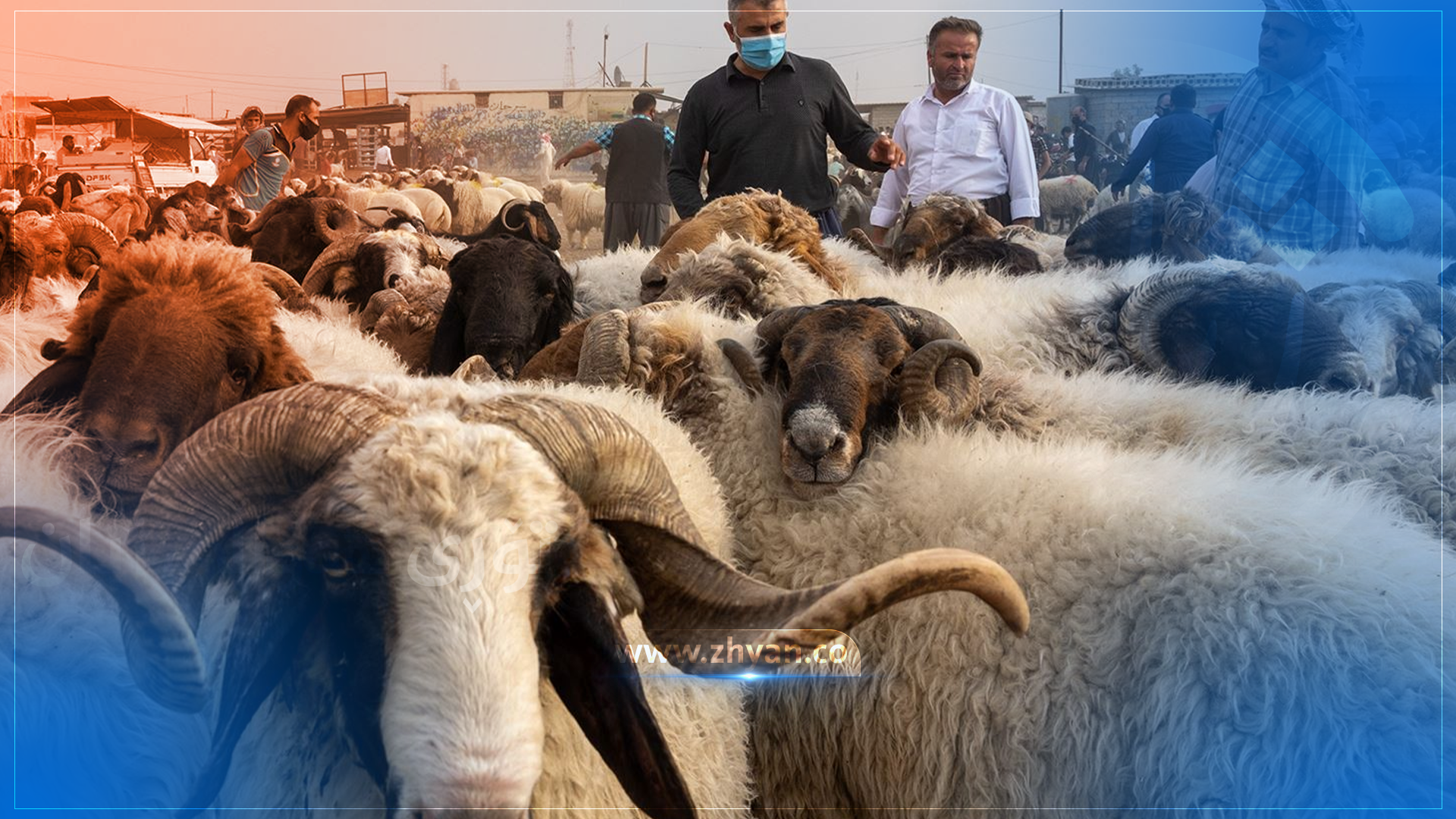Official statistics reveal a significant 50% decrease in animal sacrifices at official slaughterhouses across the Kurdistan Region on the first day of Eid al-Adha compared to last year, with over 800 animals slaughtered across all regional centers.
The Kurdistan Region witnessed a notable decline in animal sacrifices during the first day of Eid al-Adha celebrations, with official slaughterhouses reporting a 50% reduction compared to the previous year’s figures. According to comprehensive statistics obtained by Channel 8, this decrease reflects changing patterns in the traditional religious practice across the region.
Helmat Hamza, Director of Erbil Slaughterhouse, reported that by noon on the first day of Eid, 63 large animals and 196 small animals had been slaughtered at their facility. The numbers represent a significant decrease from previous years, indicating shifting trends in how residents observe the religious holiday.
Mohammed Mohieddin, Executive Director of Sulaymaniyah Slaughterhouse, confirmed similar patterns in his region, stating that 410 animals were sacrificed on the first day, marking a 50% decrease compared to last year. Notably, only three citizens personally performed sacrifices, while 407 animals were brought by organizations for sacrifice purposes.
In Halabja province, veterinary director Dlnya Faruq announced that sacrifice rates had dropped by 50% within the province’s boundaries. By 8 PM on the first day, only 82 animals had been sacrificed, demonstrating the widespread nature of this declining trend across different regions.
Regional Variations in Sacrifice Numbers
Sulaymaniyah recorded the highest number of animal sacrifices among Kurdistan Region centers, followed by Erbil, Halabja, and Duhok respectively. The distribution reflects both population density and regional economic factors influencing participation in traditional Eid practices.
Erbil’s official statistics showed 248 small animals and 80 large animals were slaughtered yesterday, compared to 291 small animals and 88 large animals during the same period last year. This represents a consistent downward trend across different animal categories.
Sulaymaniyah’s figures revealed approximately 400 animals were slaughtered on the first day, with the majority being small animals. Last year’s first-day statistics showed 500 small animals and 70 large animals, confirming the significant reduction in sacrifice activities.
Dr. Dlnya Faruq from Halabja’s veterinary department reported only 98 large and small animals were slaughtered within the province’s boundaries yesterday, representing a 50% decrease from the previous year’s first-day figures. This decline pattern appears consistent across urban and rural areas within the province.
Compliance and Regulatory Challenges
Duhok Slaughterhouse recorded the lowest numbers, with director Segvan Hakim Rashid reporting only 18 animals slaughtered yesterday. By 11 AM today, an additional 12 animals had been processed, indicating continued low participation rates in the northern region.
Veterinary doctor Kawa Ahmed from Duhok Slaughterhouse noted that despite guidelines from the Ministry of Health and Veterinary Directorate, animal slaughter outside official facilities continued this year. This presents ongoing challenges for health authorities monitoring food safety and religious compliance.
Officials acknowledge that formal statistics only capture sacrifices performed at official slaughterhouses, potentially underrepresenting total sacrifice numbers. Some citizens may perform sacrifices independently outside official supervision, though these activities don’t appear in veterinary statistics.
The declining trend raises questions about changing social practices, economic factors, and evolving religious observance patterns among Kurdistan Region residents. Officials suggest the decrease might reflect economic pressures, changing lifestyle preferences, or increased awareness of organized charitable sacrifice programs that allow multiple families to participate collectively rather than individually.


